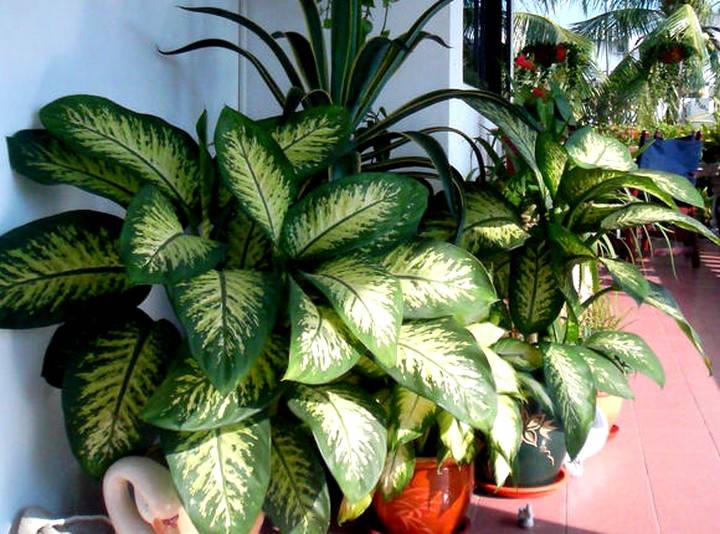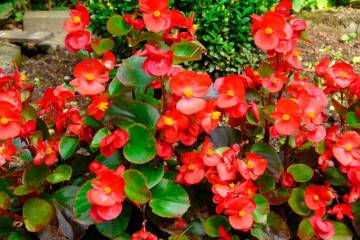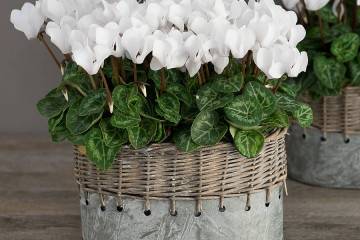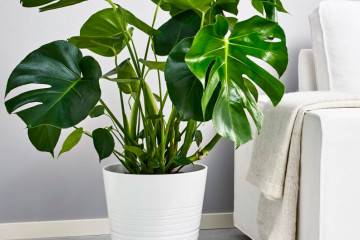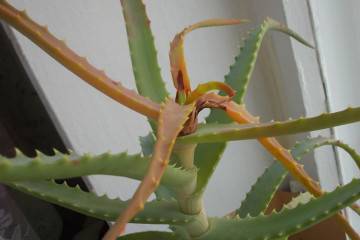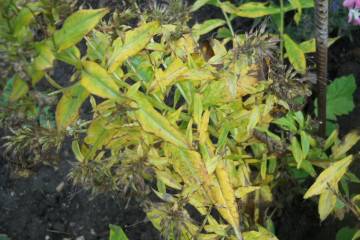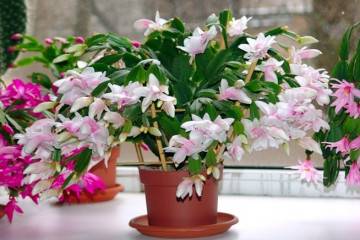Why do dieffenbachia leaves turn yellow - reasons
Content:
Dieffenbachia is a very popular houseplant with large ornamental leaves. However, sometimes there are various problems when growing a flower at home.
Dieffenbachia leaves turn yellow: what could be the reasons
Most often, flower growers are faced with the problem of yellowing of the leaf plates. There can be many reasons why dieffenbachia leaves dry:
- sudden changes in temperature;
- hypothermia or drying out of the bush due to high temperature;
- low humidity in the growing room;
- illness;
- the appearance of pests;
- waterlogged soil, as a result of which excess moisture stagnates in the soil;
- drying out of the soil due to lack of watering;
- lack of transplants, due to which the old pot becomes cramped for the root system;
- lack of dressing.
Diseases
Dieffenbachia leaves turn yellow due to fungal diseases, most of which are infectious. The foliage can turn yellow due to the following ailments:
- leaf spot. The edges of the leaf plates are covered with dark yellow spots. If left untreated, the entire leaf turns yellow;
- anthracnose. Large dark spots appear on the leaves, they soon dry up and die;
- Fusarium infection affects the root neck. It is not only the leaves that suffer, but the whole flower as a whole;
- root rot also begins to infect the root collar first. A very dangerous disease;
- bronzing manifests itself in the appearance of round yellow spots, which are sometimes in the form of rings or arcs;
- viral mosaic is the most dangerous disease for dieffenbachia. With it, small yellow and brown spots appear in the form of patterns.
Leaf spot and anthracnose are caused by high temperatures and low humidity indoors. It is recommended to increase the humidity on your own, especially in winter. You can spread a wet rag on a heating radiator and regularly spray the above-ground part of the bush with non-cold water. If the disease has already hit the flower, you need to treat it with a fungicide.
Fusarium and root rot are infectious diseases, therefore it is necessary to transplant the flower into another disinfected soil. Throw out the old pot and thoroughly disinfect the gardening tools.
A characteristic feature of bronze is that only the leaves affected by the disease turn yellow and dry on the bush. They need to be removed and the sections treated with activated carbon or a solution of potassium permanganate.
But the viral mosaic cannot be cured. The only thing that needs to be done is to quickly get rid of the plant along with the pot, since the disease is contagious. Mosaic appears not only with poor care, pests, especially thrips and aphids, can carry it with them.
Pests
Even though Dieffenbachia contains essential oils that should repel insects, it is often attacked by pests. They are located on the leaves, less often on the stems. They begin to eat the fleshy parts, which is why the growth of the flower is delayed, and the leaves begin to fade and turn yellow.
Dieffenbachia is most often affected by the following pests:
- aphids weakens the plant and transfers infections to other parts of the bush;
- a spider mite sucks the juice from the stems and leaves, which is why they begin to die off, turn yellow and fall;
- thrips are invisible on the surface of dark green leaves, but they provoke twisting and yellowing, followed by falling off;
- the scabula is located on the lower part of the leaves, feeds on them, provoking their yellowing.
To combat dieffenbachia pests, it is necessary to use special chemical preparations - insecticides.
Soil moisture
The most common reason for leaf tarnishing and stopping the growth of the bush as a whole is waterlogging of the soil. Dieffenbachia needs a lot of moisture in the soil to keep its large leaves healthy. Therefore, the problem of stagnation of water in the pot often arises. In such an environment, root decay begins, mold appears. Pests also love such conditions and begin to infect the bush.
The soil in the container should remain moist at all times, but at the same time loose. Good air permeability in the soil helps prevent the root causes of problems when growing Dieffenbachia. When landing on the bottom of the container, it is recommended to cover a 3-5 cm layer of drainage material: brick or expanded clay chips. The substrate itself is prepared with the addition of river sand. The surface of the ground can be covered with mulch to keep the soil moist longer and reduce irrigation.
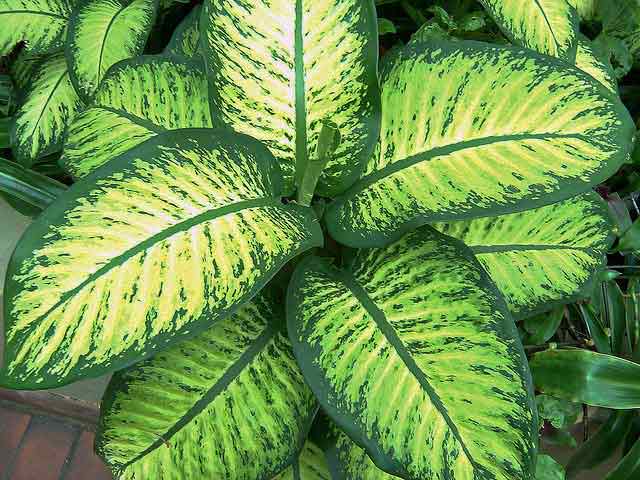
Without sudden changes in temperature, dieffenbachia leaf plates will look healthy at any time of the year.
Air temperature
As a rule, from temperature changes in the bush, the tips of the leaves begin to turn yellow and then dry. For the healthy growth of dieffenbachia, it is important not to allow a sharp drop in temperature.
Decay of roots
Root decay begins due to abundant watering. But the situation will worsen even more if the plant is grown in a cool room. If a small area of the bush is affected, you can simply cut off this place and sprinkle with crushed activated carbon tablets. However, when most of the roots are affected and the disease has spread to the lower part of the trunk, it is necessary to cut off the healthy upper part and root. The rooting procedure is carried out as when propagating plants by cuttings.
Other possible problems
When grown at home, other problems arise from which dieffenbachia suffers, diseases are not always the main cause of yellowing of foliage. Unfavorable conditions, especially increased dryness of the air, is one of such reasons. Often, strong and cold drafts affect tarnishing and leaf fall.
In rare cases, drying of foliage can be due to mechanical damage to the root or stems. For example, during transplanting or loosening the soil, the root system was damaged.
The most important reason why home-grown dieffenbachia leaves curl is improper care. But, if old leaves turn yellow and fall off, then, of course, you should not worry about this. This is a normal process for all plants, there is nothing to worry about. But in any case, you need to be always on the alert.
